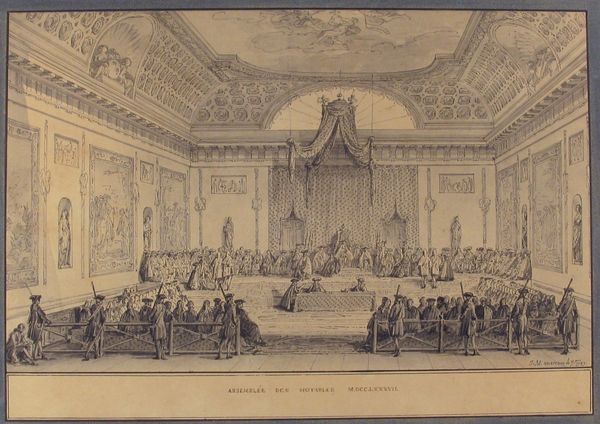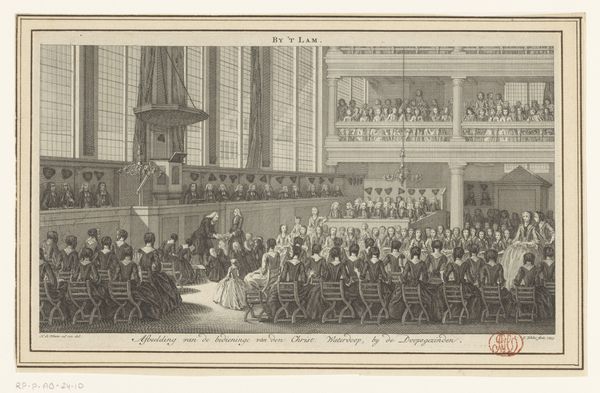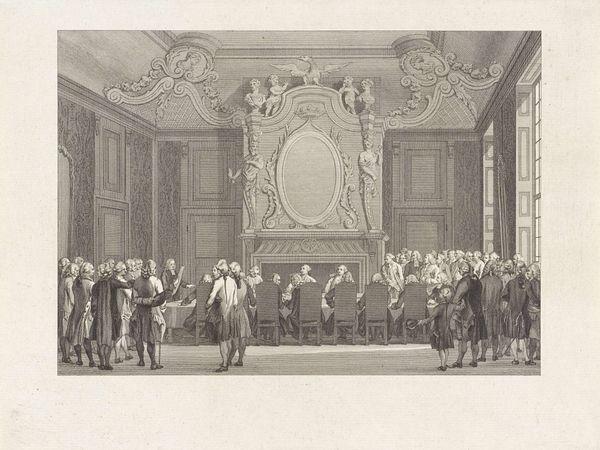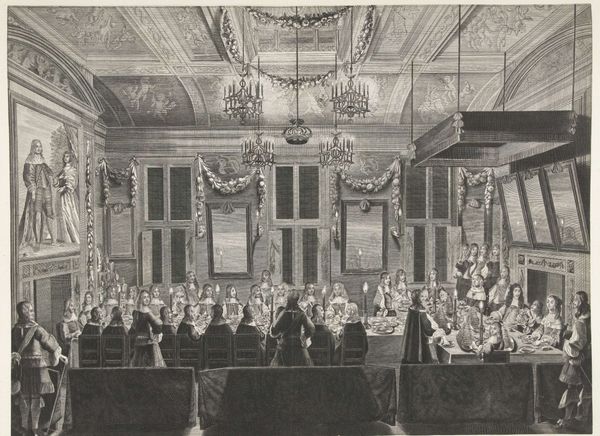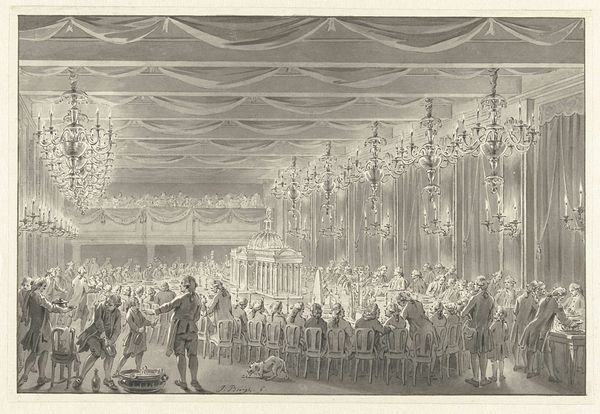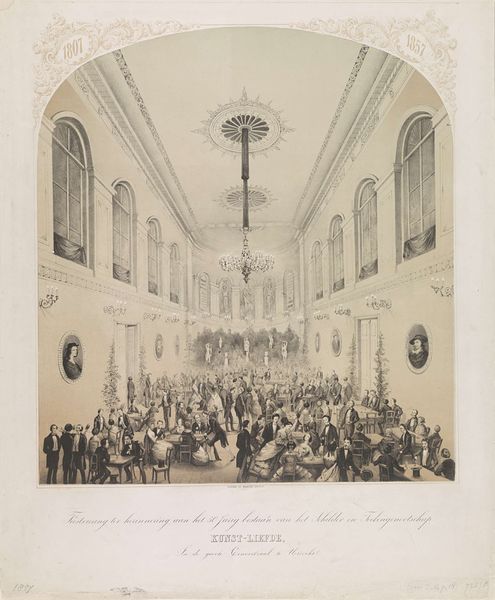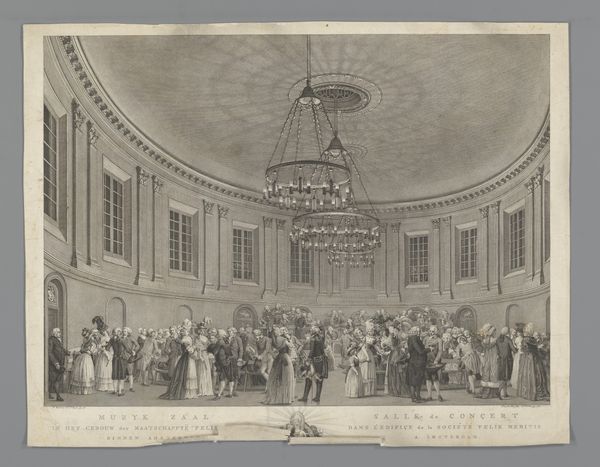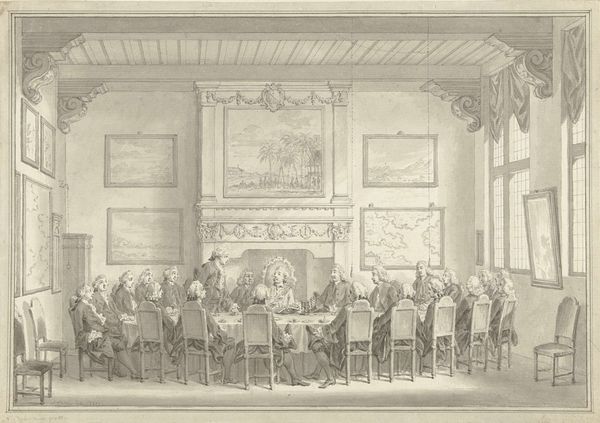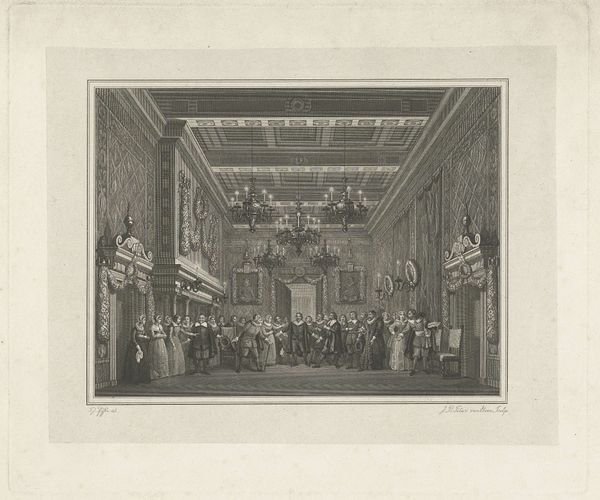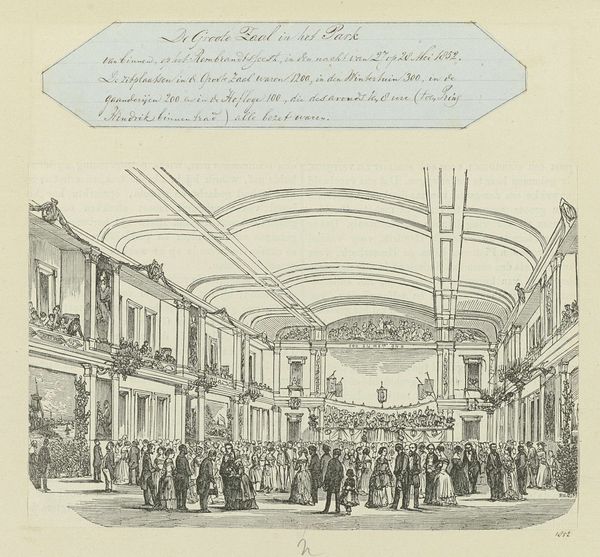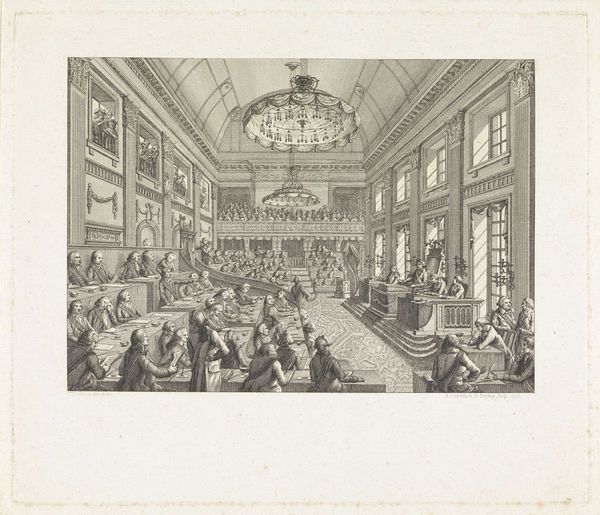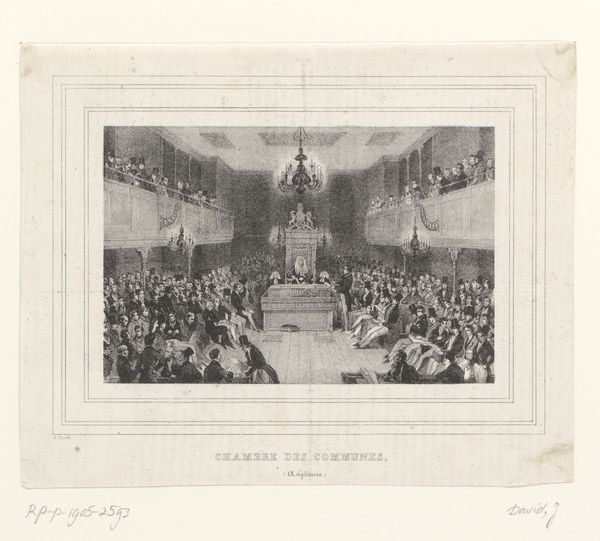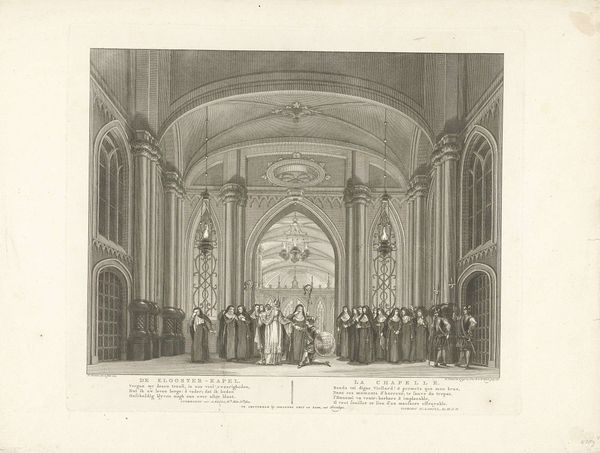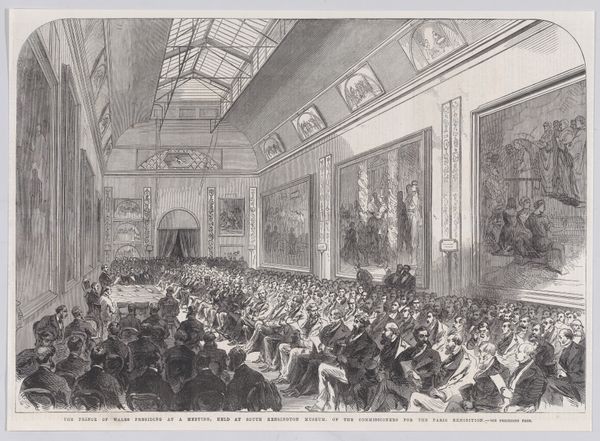
Tweede Nederlandsch Letterkundig Congres te Amsterdam, 1850 1850
0:00
0:00
lithograph, print, engraving
#
lithograph
# print
#
old engraving style
#
genre-painting
#
history-painting
#
academic-art
#
engraving
#
realism
Dimensions: height 160 mm, width 223 mm
Copyright: Rijks Museum: Open Domain
Curator: Carel Christiaan Antony Last’s lithograph, “Tweede Nederlandsch Letterkundig Congres te Amsterdam, 1850,” presents a scene brimming with formal intensity. Editor: It strikes me immediately as incredibly precise, almost clinical in its depiction of such a vast interior space. The etching work itself must have taken considerable time and focus. Curator: Indeed. The careful rendering of architectural detail creates a rhythm of vertical lines – the columns, windows – punctuated by the chandelier’s radiating form. Notice how that formal repetition helps create an elevated space within this very full chamber. Editor: Speaking of the full chamber, this scene displays a lot of action! Think about the workshops of the period, and all of the highly specialized labor involved to pull something like this together – papermakers, engravers. This lithograph had the potential to be shared very broadly among the population, providing an interesting record. Curator: You raise an excellent point about access, the composition itself reinforces hierarchy: The speaker dominates the very top with an army of onlookers while most of the literary crowd must crane their necks from the bench rows on the floor. The formal structure mirrors social stratification, a common theme in academic art of the time. Editor: True, that perspective does command authority, yet also conveys the real, everyday gathering of people who were very actively trying to formulate and discuss issues that deeply impacted their work. And I keep thinking of how the scale would feel. Imagine working with those engraving tools, capturing all these fine details onto a metal plate! The sheer process speaks to craft as much as fine art. Curator: Its precise line work and balanced composition, characteristic of the Realist movement, contribute to its intellectual and historical value, especially in visualizing how a nation defines itself. Editor: Ultimately, the lithograph prompts consideration of how materiality shapes cultural expression in a broad segment of 19th-century society. The social life of things comes to mind. Curator: I find its deliberate construction reveals layers of meaning when viewing this type of assembly. A study in spatial dynamics and representation! Editor: And the study in the social dynamics behind image-making opens up more ways of approaching and interpreting its relevance in Dutch history.
Comments
No comments
Be the first to comment and join the conversation on the ultimate creative platform.
